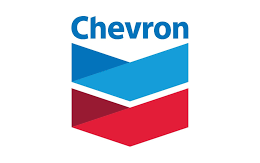by SIACharts.com
Asian markets showed mixed performance, with China Mainland rallying on government stimulus measures aimed at boosting infrastructure and exports. The National Development and Reform Commission (NDRC) announced the deployment of 500 billion yuan (approximately $70 billion) in policy-based financial tools to stimulate investment and support the slowing economy. These funds are targeted toward specific projects to enhance financial services and promote effective capital utilization. Additionally, China’s central bank pledged to intensify monetary policy adjustments and strengthen coordination with fiscal policies to bolster economic growth amid mounting external and domestic pressures. South Korea and Taiwan gained from tech sector strength, while India and Indonesia lagged amid growth concerns and capital outflows. In the Americas, Peru and Mexico surged on strong commodity demand linked to China’s stimulus efforts. The U.S. market remained steady despite a government shutdown disrupting regulators and slowing job growth. Canada posted steady gains supported by stable energy prices and solid corporate earnings. Europe experienced broad equity gains led by Spain, Poland, and Italy, fueled by improving economic data and corporate earnings. The UK’s FTSE 100 hit a record high, supported by a strong pharmaceutical sector. Geopolitical tensions rose as France intercepted a Russian tanker, highlighting concerns over energy security amid escalating risks.
Worldwide Market Snapshot: Year-to-Date and Quarterly Returns
Asian markets show a mix of strong and weak performers. South Korea leads with an impressive +58.53% YTD and +13.07% quarterly gain, followed by Taiwan (+25.26% YTD, +13.16% quarterly) and China Mainland, which posted a strong rebound at +41.74% YTD and +19.85% quarterly. In contrast, India and Indonesia both show negative returns for the year (–0.98% and –3.00%, respectively), with India also down –6.13% this quarter. Thailand is just barely positive YTD at +0.27%, despite a solid +14.87% quarterly bounce.The Americas are led by Peru, showing the strongest regional growth with +57.04% YTD and a stellar +24.85% quarterly return.
Mexico and Brazil also stand out, delivering +41.57% and +33.71% YTD, respectively. Canada shows steady performance at +23.99% YTD and +8.69% quarterly, while the United States posted modest but healthy gains of +17.77% YTD and +9.20% quarterly. In contrast, Argentina is the region’s clear laggard, with –18.22% YTD and –19.24% over the last quarter, marking a steep decline.European markets are broadly strong. Spain tops the list with +61.68% YTD and +12.18% quarterly performance, followed closely by Poland (+58.94% YTD) and Italy (+48.27% YTD, +9.07% quarterly). The Netherlands, Germany, and Belgium each delivered 30%+ YTD gains, although Germany had a flat quarter at –0.03%. Sweden, France, and Great Britain posted steady but more moderate returns, while Switzerland lagged slightly with just +1.84% quarterly growth despite a solid +21.25% YTD. Overall, Europe shows strong momentum across both core and peripheral economies.
Reading the Tape: Platforms vs. Poles in a Crowded Market
In today’s market, many stocks have made massive gains and now sit atop steep point-and-figure chart poles, a visual sign of vertical, often unsustainable moves. While momentum has rewarded investors year to date, these P&F pole formations could suggest potential near-term exhaustion, leaving advisors facing a familiar challenge: how to maintain upside participation without chasing overbought names. In this environment, identifying new setups with favorable technical structures and solid fundamentals becomes critical.In our daily discussion with elite SIA advisors we understand that they are increasingly focused on uncovering platforms, not poles, base formations that offer lower-risk entries and room for expansion. That is where Marvell Technology (MRVL) might come into play.
Unlike many of its semiconductor peers, MRVL has been consolidating tightly for several months, avoiding the blow-off top behavior seen elsewhere such as in Oracle (ORCL). MRVL has recently moved into the favored zone of the SIA NASDAQ 100 Index Report, a powerful signal of improving relative strength. Marvell’s positioning in custom silicon and optical interconnects aligns it well with the ongoing AI infrastructure buildout, which remains a powerful long-term catalyst.On a point-and-figure chart, MRVL is forming a clean base, a platform with bullish potential rather than a parabolic move that has already played out. The stock is currently trading on top of a well-defined platform zone of support between $75.60 and $69.84, offering technical clarity for risk management.
In a tape where crowding is becoming a risk, Marvell is emerging as a fresh, high-quality idea for SIA practitioners looking to stay ahead of momentum rotation and re-position alpha-based portfolios. Resistance is observable on the P&F chart at $90.35, a level that dates back to 2022. Nearer-term resistance from late 2024 is at the psychological whole level of $101.75, with a longer-term topside resistance at $126.51. MRVL sits within the favored SIA sector Electronics & Semiconductor report and carries a strong SMAX score of 8/10, a reading taken against a basket of alternate asset classes further supporting its growing relative strength.
Disclaimer: SIACharts Inc. specifically represents that it does not give investment advice or advocate the purchase or sale of any security or investment whatsoever. This information has been prepared without regard to any particular investors investment objectives, financial situation, and needs. None of the information contained in this document constitutes an offer to sell or the solicitation of an offer to buy any security or other investment or an offer to provide investment services of any kind. As such, advisors and their clients should not act on any recommendation (express or implied) or information in this report without obtaining specific advice in relation to their accounts and should not rely on information herein as the primary basis for their investment decisions. Information contained herein is based on data obtained from recognized statistical services, issuer reports or communications, or other sources, believed to be reliable. SIACharts Inc. nor its third party content providers make any representations or warranties or take any responsibility as to the accuracy or completeness of any recommendation or information contained herein and shall not be liable for any errors, inaccuracies or delays in content, or for any actions taken in reliance thereon. Any statements nonfactual in nature constitute only current opinions, which are subject to change without notice.













